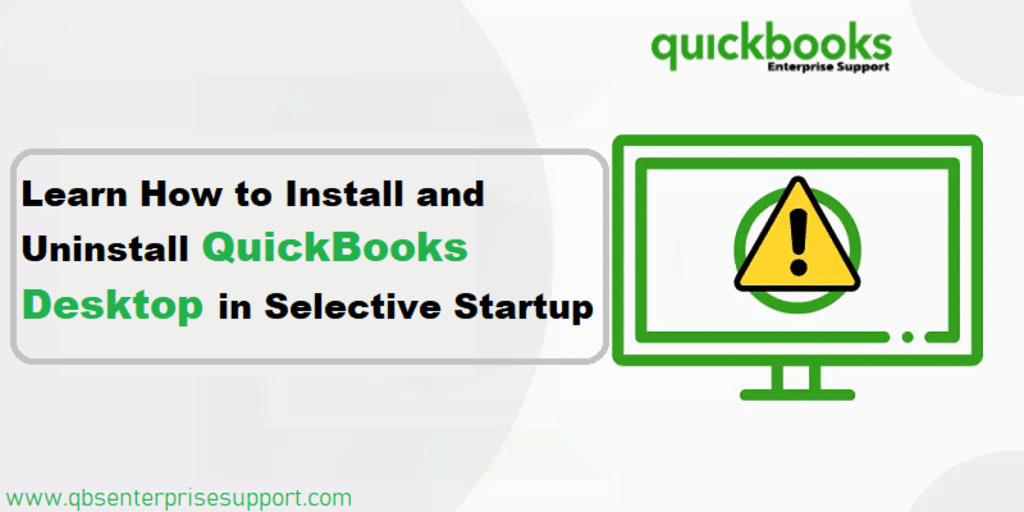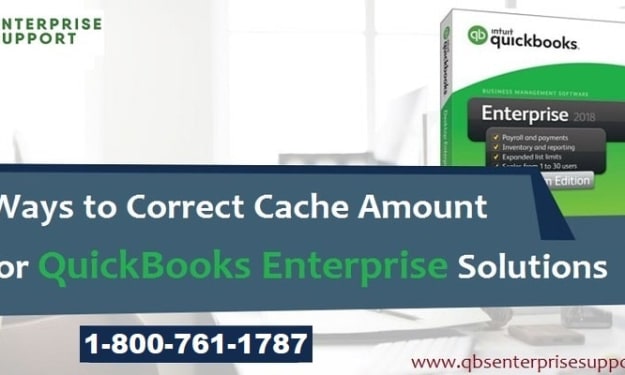Installation or Uninstallation of QuickBooks in Selective startup
Installation or Uninstallation of QuickBooks

Users of QuickBooks tackle different varieties of technical issues while trying to install, uninstall or update their accounting program. While some of these errors are caused due to technical faults emanating within the program itself, others are incited by some conflicting third-party programs running at the backend. To get this sorted out, an effective alternative is to install or uninstall QuickBooks in Selective Startup Mode. Thus, keep read on!
Why to Install or uninstall QuickBooks in Selective Startup mode?
Using the selective startup mode disables unwanted processes and drivers running at the backend. These may be conflicting with QuickBooks functionalities and may evoke different forms of error while installing and uninstalling the QuickBooks program. Using the Selective Startup mode not only acts as a bone guard against any technical error while updating QuickBooks, but also increases the processing speed of the system since most of the RAM remains unoccupied.
Procedure to Install QuickBooks in Selective Startup Mode
The procedure to install or uninstall QuickBooks in the Selective startup mode is:
• To begin with, press the short key Windows + R.
• This action will open the Run window. Here, type msconfig and press Enter key on the keyboard.
• This will open the system configuration window.
• Herein, click on the Selective startup and Load services.
• After that, click on Apply and then hit on Ok to close the window.
• Now, restart the computer and tap the F8 key repeatedly.
• This action will unveil a black screen with the Advanced Boot Options.
• Herein, use the arrow keeps choosing Safe Mode with Networking.
• Upon highlighting the option, hit the Enter key.
• When the desktop appears, install QuickBooks desktop a usual.
Steps to Uninstall QuickBooks in Selective Startup Mode
To uninstall QuickBooks, implement the following steps:
• Once the Desktop loads in the selective startup mode, click on the Windows key and go to the Control Panel.
• Now, head to Programs and Features.
• Here, opt for QuickBooks and then click on Uninstall/Change.
• Subsequent to that, click on the Uninstall option.
• Proceed ahead with the onscreen directions to successfully uninstall QuickBooks.
Step 1: Enabling Selective Startup
Selective startup mode ensures no other apps gets in your way. Though the steps we have provided here are easy to follow – If you’re still uncomfortable perform them, consult your computer’s manufacturer or a Windows expert.
- Press the Windows key + R to open the Run dialog box
- Type “msconfig” and press Enter key.
- Type msconfig in Run - Image
- In the General tab, select “Selective startup” and Load system services.
- Go to the Services tab and select “Hide all Microsoft Services”
- Hide all Microsoft Services - Image
- Select “Disable all”
- Uncheck Hide all Microsoft services.
- Choose Windows Installer from the list of services
- Press OK and then Restart on the System Configuration window.
Step 2: Uninstall QuickBooks
- Open the Windows Start menu.
- Go to “Control Panel”
- Select Programs and Features or Uninstall a Program.
- Select your version of QuickBooks Desktop from the list of programs.
- Select Uninstall/Change, Remove and press Next.
- Uninstall your QuickBooks desktop - Screenshot Image
- If the option is unavailable, sign out and sign back in to Windows as an admin (or a user with admin rights).
Step 3: Installing QuickBooks
- Insert the QuickBooks installation CD or run the installation file from your computer.
- Follow the on-screen instructions to install QuickBooks.
- Install multiple instances of QuickBooks on the same system - Screenshot Image
- Once the installation is complete, restart your computer.
Note: When you reinstall QuickBooks desktop, the program will automatically install new folders and rename your old ones.
Step 4: Verify Successful Installation
- Press the Windows key + R to open the Run dialog box.
- Type “msconfig” and press Enter key.
- In the System Configuration window, go to the General tab.
- Select “Normal Startup”
- Select normal startup - Screenshot
- Click on Apply and then OK tab.
- Restart your computer for the changes to take effect.
- Launch QuickBooks to verify that it has been installed successfully.
Most Common Issues you may face while Installing or Uninstalling QuickBooks in Selective Startup
During the reinstallation process, you may come across the following issues:
- Error messages during installation or uninstallation
- Inability to find QuickBooks in the Control Panel
You can perform the following steps to resolve the issues as mentioned above:
- Run the installation or uninstallation as an administrator.
- Disable any antivirus (temporarily) during the installation or uninstallation process.
- Use the QuickBooks Install Diagnostic Tool to fix any issues related to the .NET framework or MSXML.
- Contact QuickBooks support for further assistance.
Conclusion
This was all about the brief procedure to Install or uninstall QuickBooks in the Selective Startup mode. This mode is generally sought-after when users stumble upon peculiar errors while installing or uninstalling QuickBooks in the Normal mode.
The selective startup mode nullifies the chances of errors caused due to conflicting programs or processes operating in the background. If you have any related queries, you may reach us out at the helpline 1-800-761-1787. Our QuickBooks desktop support team will be more than happy to assist you.
About the Creator
qbsenterprisesupport
Adelina Martin is proficient accounting marketing manager at QBS Enterprise support. Earlier, he was the head of the business marketing department. His personal interests include, love for nature and travelling.






Comments
There are no comments for this story
Be the first to respond and start the conversation.